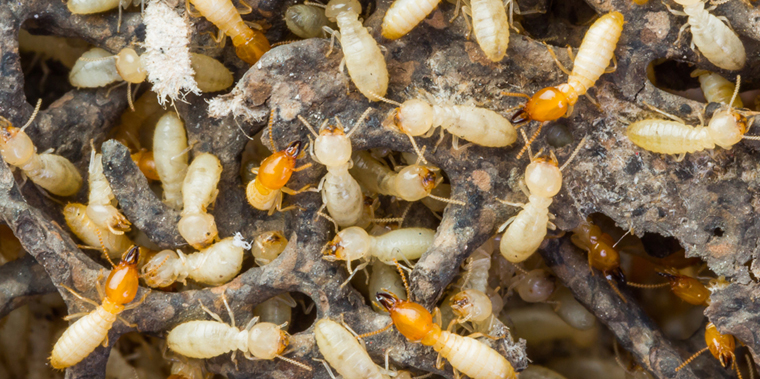Termites cause great losses to man. They are known as pests of wood in houses. Not just that, they are also pests in the agriculture sector. Some studies show that losses caused by termites are four times higher than losses caused by fire. In urban areas, termites damage wooden structures such as door frames, kitchen cabinets, parquet flooring and even roof trusses.
In Malaysia, Coptotermes spare the most common species that cause extensive damage to buildings. A single colony of Coptotermes can search for food over an area covering a distance of about 100 metres. They can also affect the top levels of multi-storey buildings.
Genus of Coptotermes is also known to be the most destructive termites in the Malaysian agriculture sector. They normally attack rubber and mango trees causing great loss to the industry.
They often attack the heartwood and consume it before working outwards. The infested tree often dies and collapses. It is quite simple to tell that a tree is infested with active termites. The new leaves normally turn yellow and eventually, the other leaves also show the same symptom. Termites gain entry into buildings through cracks in the foundations and wall floor interface. Beside that, electrical conduits, along water pipes in the walls and telephone lines are the best and strategic areas for them to penetrate into premises.
Once termites have gained entry into buildings, the infestation goes unnoticed for months as they conceal their presence with mud tubes or traverse behind wooden structures. The infestation normally goes unnoticed because the termites do not eat the external part, for example, if they infest parquet flooring, they will not feed on the shellac layer.
HOW TO CONTROL
The species of termite, nature of the business, location and condition of the termite infestation area will come into consideration when deciding the best solution. Below are some of the common control methods:
- BAITING
By far this method has been hugely popular with a proven record in eliminating the whole termite colony. It is also known as one of the more environmental-friendly approaches as only a small amount of insecticide with low concentration is used.
A bait, in general, is a mixture of food (cellulose) and insecticide. For the above-ground bait station, it will be installed at an active termite infestation area where the bait will be consumed by the workers and they will subsequently bring the poison food back to the colony (nest) to share with the other members. Preventive measure is possible by using the in-ground station, which is installed outdoor along the perimeter of the premise that also serves as a monitoring purpose. Once termite is found inside the station, the monitoring wood stick will be replaced by the bait.
- SOIL TREATMENT
a) Pre-construction: Residual chemical is applied at the soil layer before the building or structure is built on it.
b) Post-construction: Small holes will be drilled along the perimeter of the premise and the chemical solution will be pumped into the holes in order to form a chemical protection layer against the termites.
- TERMGUARD* PERIMETER & PENETRATION RETICULATION SYSTEM
Specifically designed to continuously deliver termiticide throughout the building, Termguard Reticulation Systems were developed to provide uninterrupted maximum protection against subterranean termites for the life of the building.



 Malaysia
Malaysia